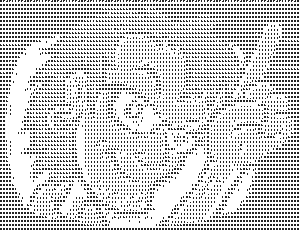CSS animation-fill-mode
We're always super excited to get into CSS animations because, quite frankly, they're incredibly awesome. One overlooked animation property, however, is the animation-fill-mode property. This CSS property sets the state of the end animation when the animation is not running. Here's a quick example:
@keyframes fadeIn{
0% { opacity: 0 }
100% { opacity: 1 }
}
.fadeIn {
animation-name: fadeIn;
animation-duration: 1s;
animation-fill-mode: forwards;
}
In the case of my fadeIn animation, I want the element to stay at an opacity of 1 when the animation is complete. If I don't set the value to forwards, the element would go back to an opacity of 0 after the animation runs. In most cases, you'll likely want the the value of animation-fill-mode to be forwards, so don't forget to add it!
![How I Stopped WordPress Comment Spam]()
I love almost every part of being a tech blogger: learning, preaching, bantering, researching. The one part about blogging that I absolutely loathe: dealing with SPAM comments. For the past two years, my blog has registered 8,000+ SPAM comments per day. PER DAY. Bloating my database...
![5 Awesome New Mozilla Technologies You’ve Never Heard Of]()
My trip to Mozilla Summit 2013 was incredible. I've spent so much time focusing on my project that I had lost sight of all of the great work Mozillians were putting out. MozSummit provided the perfect reminder of how brilliant my colleagues are and how much...
![Create a CSS Flipping Animation]()
CSS animations are a lot of fun; the beauty of them is that through many simple properties, you can create anything from an elegant fade in to a WTF-Pixar-would-be-proud effect. One CSS effect somewhere in between is the CSS flip effect, whereby there's...
![MooTools ASCII Art]()
I didn't realize that I truly was a nerd until I could admit to myself that ASCII art was better than the pieces Picasso, Monet, or Van Gogh could create. ASCII art is unmatched in its beauty, simplicity, and ... OK, well, I'm being ridiculous; ASCII...





Indeed, animation-fill-mode defaults to “none”, which means no animation style is applied when the animation starts or ends. You could expect “forwards” to be the default one, but… nope.
The other values are “backwards” and “both”. Cue to MDN page:
https://developer.mozilla.org/en-US/docs/Web/CSS/animation-fill-mode
> You could expect “forwards” to be the default one, but… nope.
This is why Max: http://www.w3.org/TR/css3-animations/
> The keyframes specify the behavior of one cycle of the animation… If a 0% or “from” keyframe is not specified, then the user agent constructs a 0% keyframe using the computed values of the properties being animated. If a 100% or “to” keyframe is not specified, then the user agent constructs a 100% keyframe using the computed values of the properties being animated.
> …by default an animation does not affect property values after the animation ends. The ‘animation-fill-mode’ property can override this behavior.
So, it is assumed that the non-animated state is the ‘default’ resting state for the animation.
This definitely helped me out a few times. I also like the “animation-direction” property, it can lead to interesting effects: http://cdpn.io/Kdslg